
Looking to keep warm this winter without the high utility bills? Use this pellet stove installation cost guide to see what a natural heating solution will cost.
Take these different models for a spin


Hire an appliance installation pro to find out what washing machine works best for your home based on your laundry preferences, washer hookup location, and budget.
Front-load and stackable washing machines work best for small spaces.
For households with smaller loads of laundry, consider a washer/dryer combo or even a portable washer.
Spacious laundry rooms are ideal for top-load washers, including those with agitators or impellers.
There’s nothing like the perk of in-house laundry. But, when deciding how to outfit your laundry room, choosing between the many types of washing machines can be a challenge. Let’s break down the different types of washing machines and what factors should determine your choice.
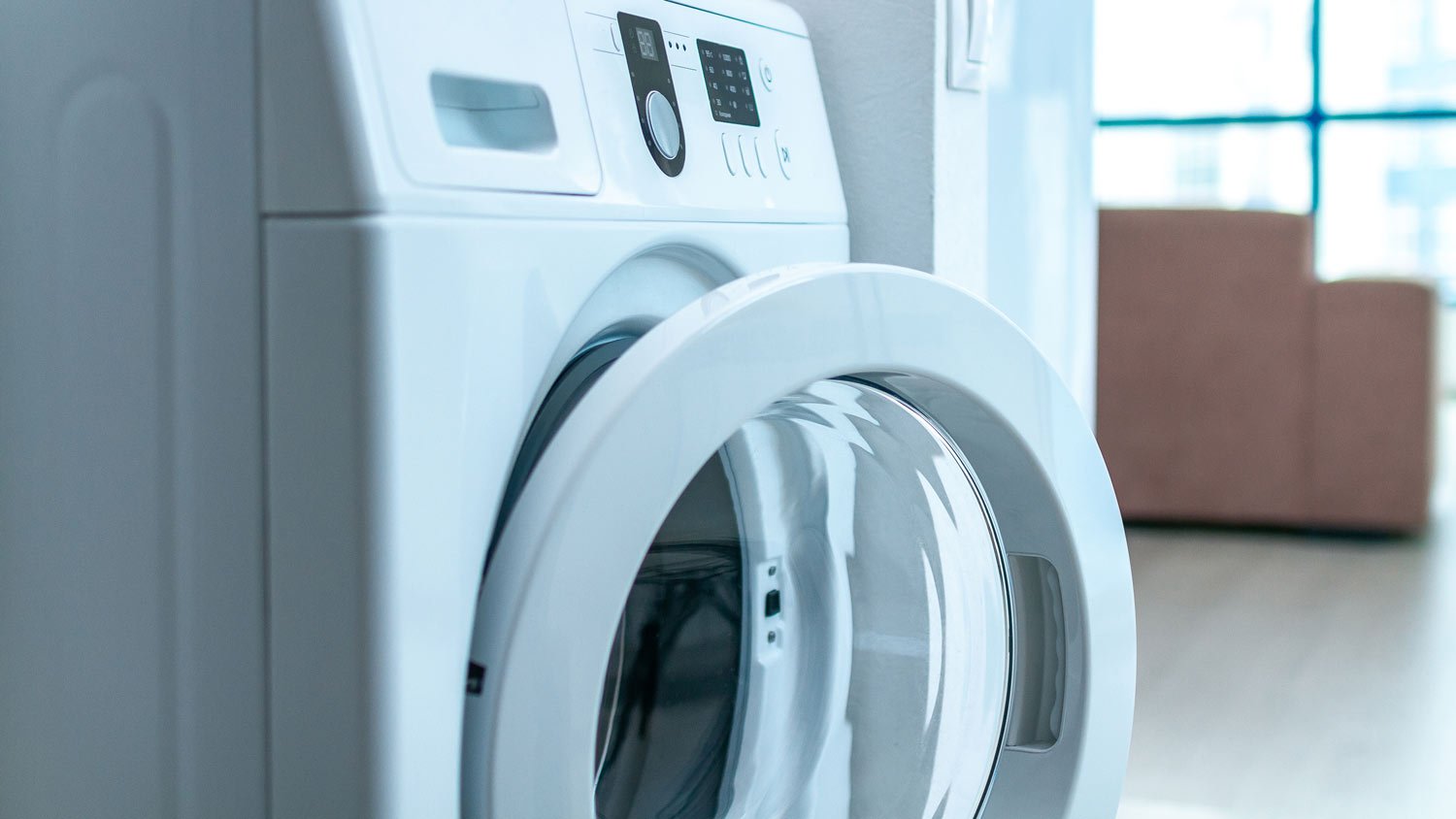
Front-load washers rotate open from the front, with the drum inside churning horizontally. Besides where the clothes are loaded, one of the most significant differences between top-load and front-load washers is the absence of an agitator in the drum. Front-load washers are more compact, offering a space-saving solution for smaller laundry rooms. But, with the smaller size comes a smaller capacity and the inability to interrupt loads as you can with a top-loading washer. Additionally, front-loading washers can be harder to clean and are more prone to mold and mildew.
| Pros | Cons |
|---|---|
| High efficiency | Smaller capacity |
| Less water | Harder to load |
| Gentle | Can’t interrupt loads |
| Smaller footprint | Hard to clean |
Best for: Smaller laundry rooms
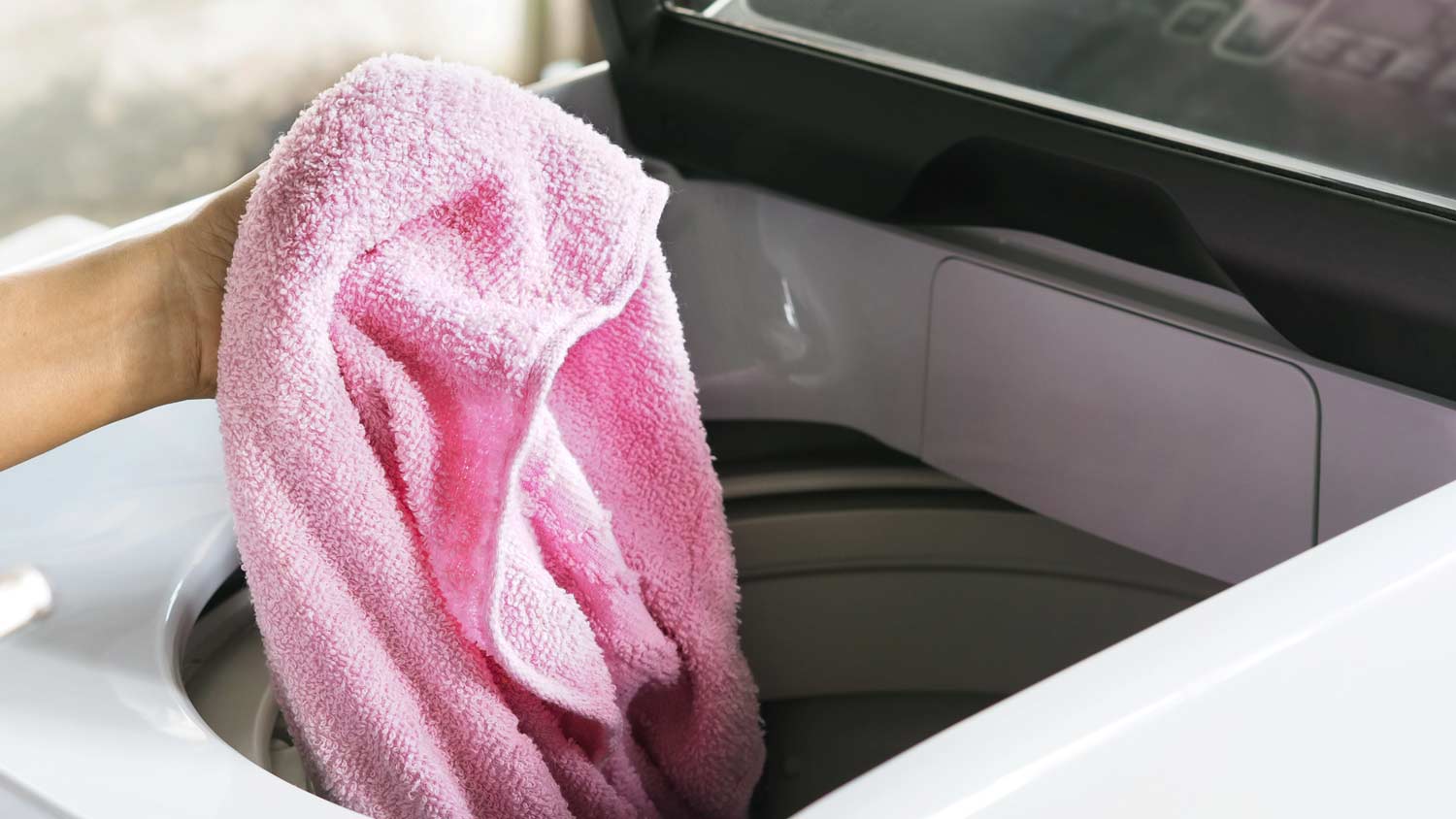
As the name suggests, top-load impeller washers load laundry from the top. Impeller washers use a rotating device in the drum to clean clothes quickly and efficiently. They have a larger capacity than many other washers while still being water and energy-efficient. While they can’t stack, they are easy to clean and air out between cycles.
| Pros | Cons |
|---|---|
| Large capacity | Can’t stack |
| Gentler | Expensive |
| Water and energy-efficient | Longer cycles |
| Easy to clean | HE detergent required |
Best for: Efficiency-minded buyers with a large laundry room
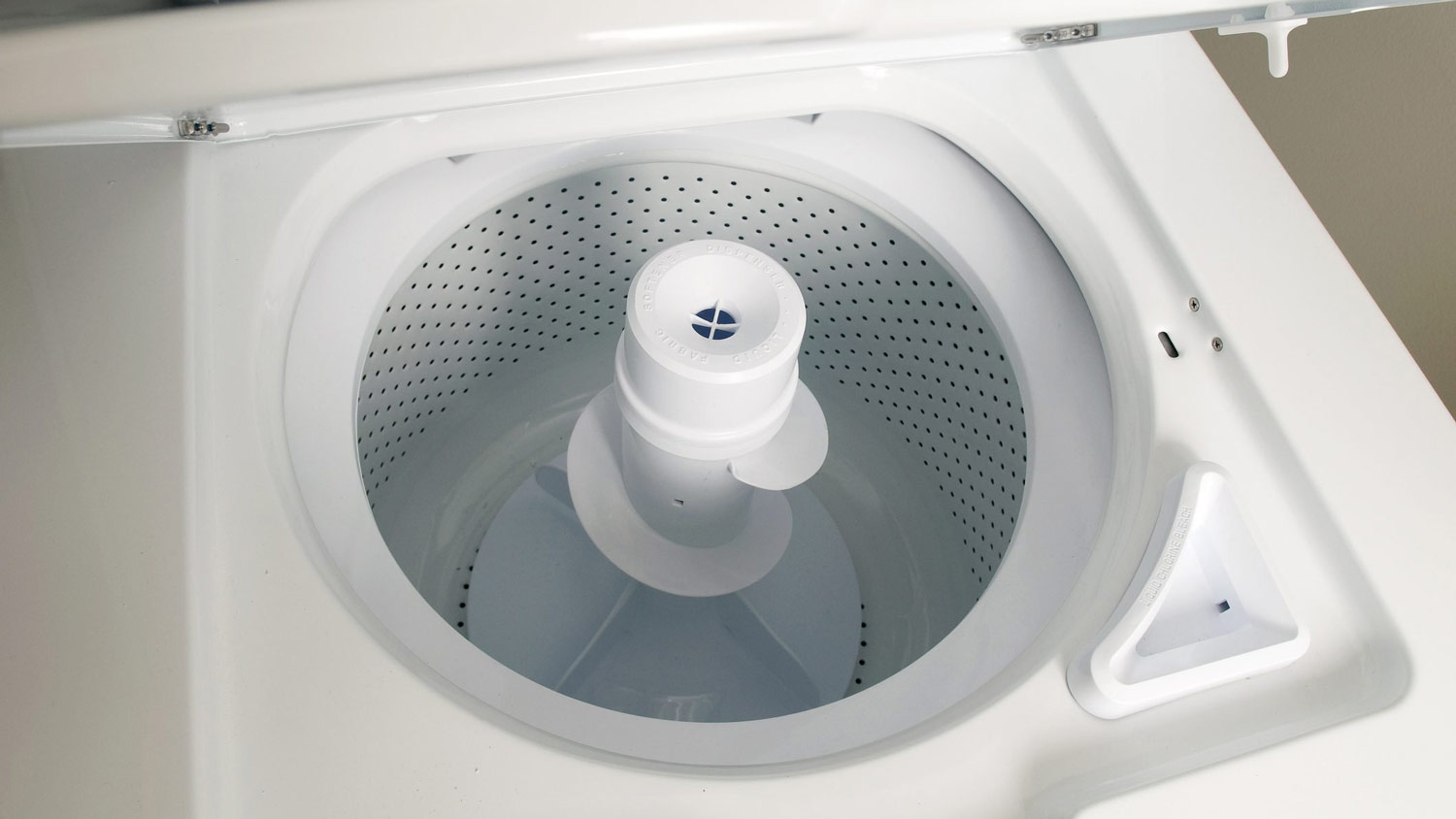
Similar to top-load impeller washers, agitator washers load from the top part of a washing machine. Agitators have a large pole in the middle of the drum that rotates vertically during the cycle to clean clothes. Agitator washers are the predecessors to impellers, and while they have the same capacity at a lower price, they aren’t as water or energy-efficient as impellers.
| Pros | Cons |
|---|---|
| Large capacity | Can’t stack |
| Affordable | Not as water or energy-efficient |
| Simple to load | Loud |
Best for: Budget-minded buyers with space
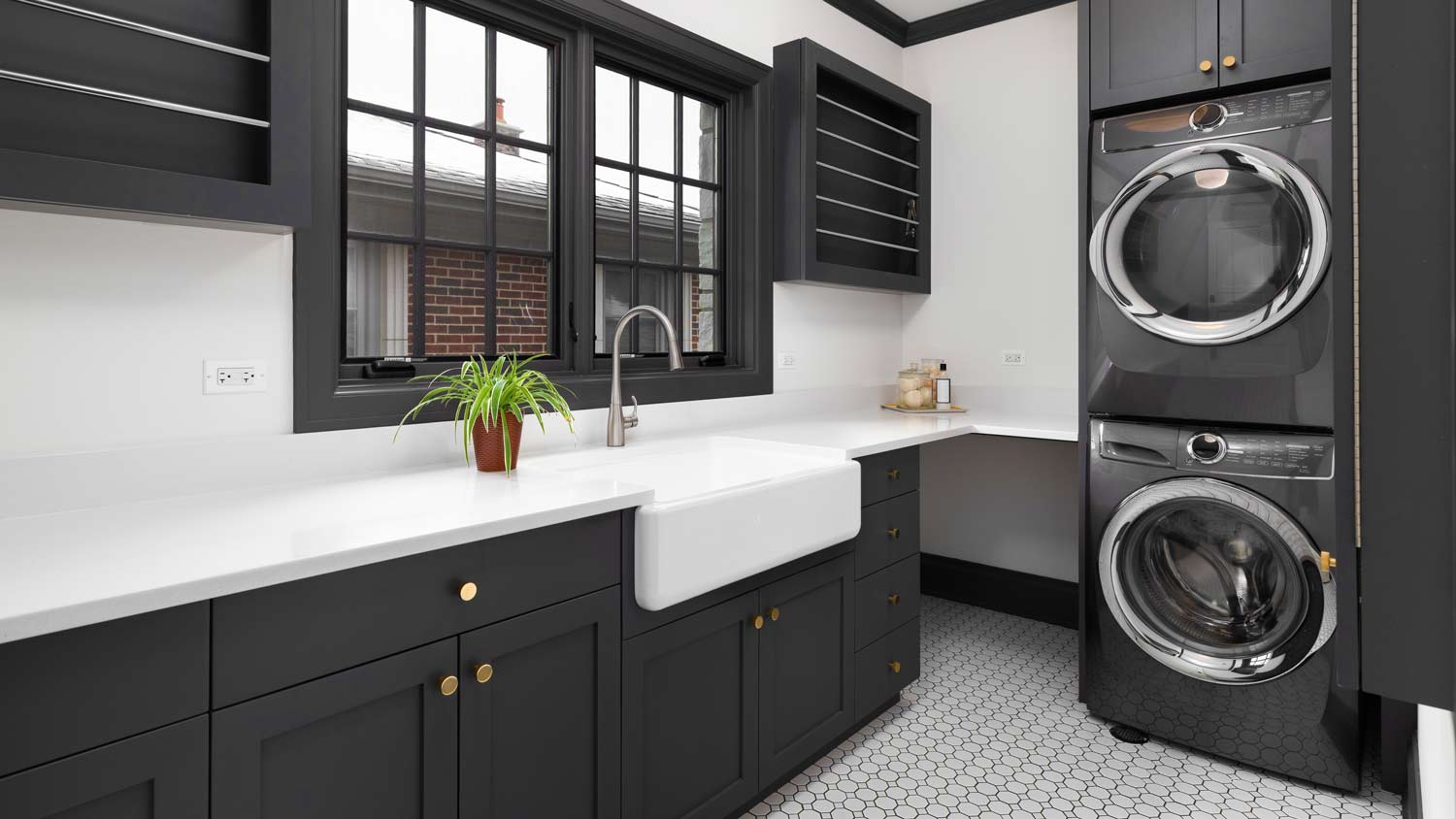
Stackable washers are front-loading washers that can stack a dryer on top of them, making them an excellent solution for smaller homes with a laundry closet. This feature can be convenient when there’s not enough room for top-loading washers. But, with the space-saving trade-off comes a smaller capacity and noisier machine. Stackable washers may also require more maintenance in the long term.
| Pros | Cons |
|---|---|
| Space-saving | Small loads |
| Good for small homes | Noisy and vibrates |
| Available in different models | More maintenance |
Best for: Small homes with laundry closets or limited space

With a combination washer/dryer, you benefit from two appliances in one. Washer/dryer combos will wash and immediately dry your clothes without you having to move the load from one machine to another. While it’s energy and space-efficient, washer/dryer combos often have a longer cycle, and you can’t run loads of laundry in the dryer and washer simultaneously, making the whole process longer.
| Pros | Cons |
|---|---|
| Best for small spaces | Expensive |
| Two-in-one usage | Long cycles |
| Energy efficient | Longer laundry time |
| Don’t move laundry | Both functions break down simultaneously |
Best for: Smaller households with less laundry
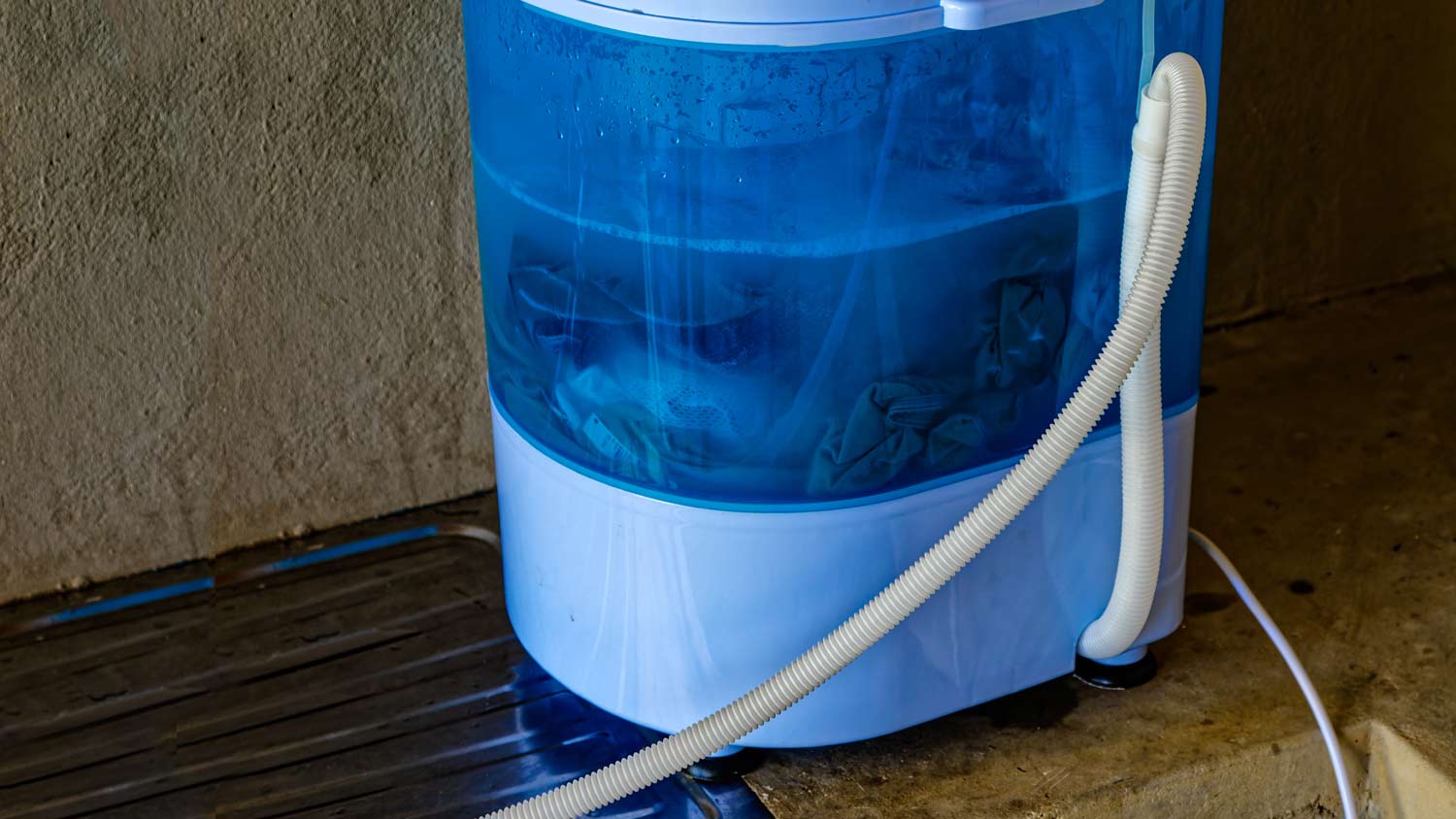
As the name suggests, portable washers are for spaces that don’t have the space for a permanent washer. Portable washers are hooked up to a faucet and empty the dirty water out via the sink. The benefit of portable washers is that they can be moved into storage when they’re not in use. However, because they’re portable and small, they can be inefficient with long cycles and small capacities.
| Pros | Cons |
|---|---|
| Moveable | Small loads |
| Small | Long cycles |
| Flexible location | Noisy |
| Affordable | Inefficient |
Best for: Small spaces without washer/dryer hookups
While different types of washing machines come with various features, you’ll find some common add-ons with most high-efficiency washer offerings. If you’re looking for premium features, you can look for a model that adds the following:
Smart features. Like other smart home appliances, you can connect some washers to the WiFi, run loads of laundry remotely, or get an alert on your phone when a cycle is finished.
Intuitive controls. Whether or not your washer is “smart,” it may offer a digital control system that makes scrolling through the various cycle options a breeze—and even helps select the right one for your needs.
Automatic dispenser. Some luxury washer models have the added feature of automatic dispensing with each cycle. You can preload detergent, fabric softener, and other products to be dispensed at the exact right time for each cycle.
Steam. A more popular feature in recent years is that some washers will strategically add steam at specific times during the cycle. This steam can help reduce wrinkles and sterilize the laundry.
Pretreat stations. Washing machines do a lot, but some stains just need to be scrubbed. Pretreat stations are built-in faucets that can help you get up close and personal with the stubbornest spots.
Pedestals. These days, efficient use of space is everything. Pedestals are available that can add hidden storage under your front-load washing machine—not to mention save your back from all that bending.
With so many models on the market, it can take time to determine which type of washing machine fits your needs. Consider the following when you shop the washing machine section.
Consider how much space you have for a washer and dryer in your home. Will they need to stack on top of each other, or can you have a top-loading washer? Measure the washer and dryer dimensions in your laundry area to get a feel for the different configurations. You could also consider an all-in-one washer and dryer combo if space is truly at a premium.
Each type of washer comes with its own price point. Like any other appliance, you’ll want to consider how much you want to spend on installation. Top-loading washers start at around $350, while front-loading washers range from $700 to $1,000.
Are you in a single-person household, or do you have many family members who frequently do laundry? If you live alone or in a couple, you may not need a large-capacity washer and can make do with a smaller, energy-efficient model with smaller loads. However, if you have a full house, doing multiple loads of laundry in a day with a small-capacity washer can be a drag.
Top-loading washers are easier to load and unload than front-loading washers, which may require you to crouch down or lean into the washer to get everything out. Households with mobility limitations might prefer top-loading washers with easier access—or, as discussed above, pedestals that can make front-load machines more accessible.
While front-loading dryers often save space, they require more frequent cleanings and can harbor bacteria. Similarly, washer/dryer combos, with all their moving parts, are likely to break down. On the other hand, top-loading washers can be easy to keep clean with fewer moving parts. Consider how much maintenance you will do to keep your machine squeaky clean.
Some types of washing machines, with squeaks and vibrations, will be louder than others. If you find the noise of a washing machine to be disruptive, seek out a quieter model. (You can also read reviews ahead of time to avoid going through the hassle of buying a machine only to return it soon after hearing it work.)
Once you know which type of washing machine is best for your home, call an appliance installation company near you to get the ball rolling.
From average costs to expert advice, get all the answers you need to get your job done.

Looking to keep warm this winter without the high utility bills? Use this pellet stove installation cost guide to see what a natural heating solution will cost.

The cost to install a wall oven depends on several factors, including the type and size of the oven. Get our full wall oven installation cost breakdown.

One of the most common fridge problems is a blown compressor motor. Use this guide to determine the cost of replacing the compressor and to estimate the total cost of your repair.

Washing machine not spinning? Don’t panic—just because it appears to be broken doesn’t mean you can’t get your washer running again. Read on to learn how.

A frozen washing machine drain can interrupt your laundry routine. Learn what to do when your washing machine drain is frozen and how to prevent it.

Keep standing water and water damage from a clogged laundry drain at bay with this guide. Follow these steps for how to unclog a washer drain.